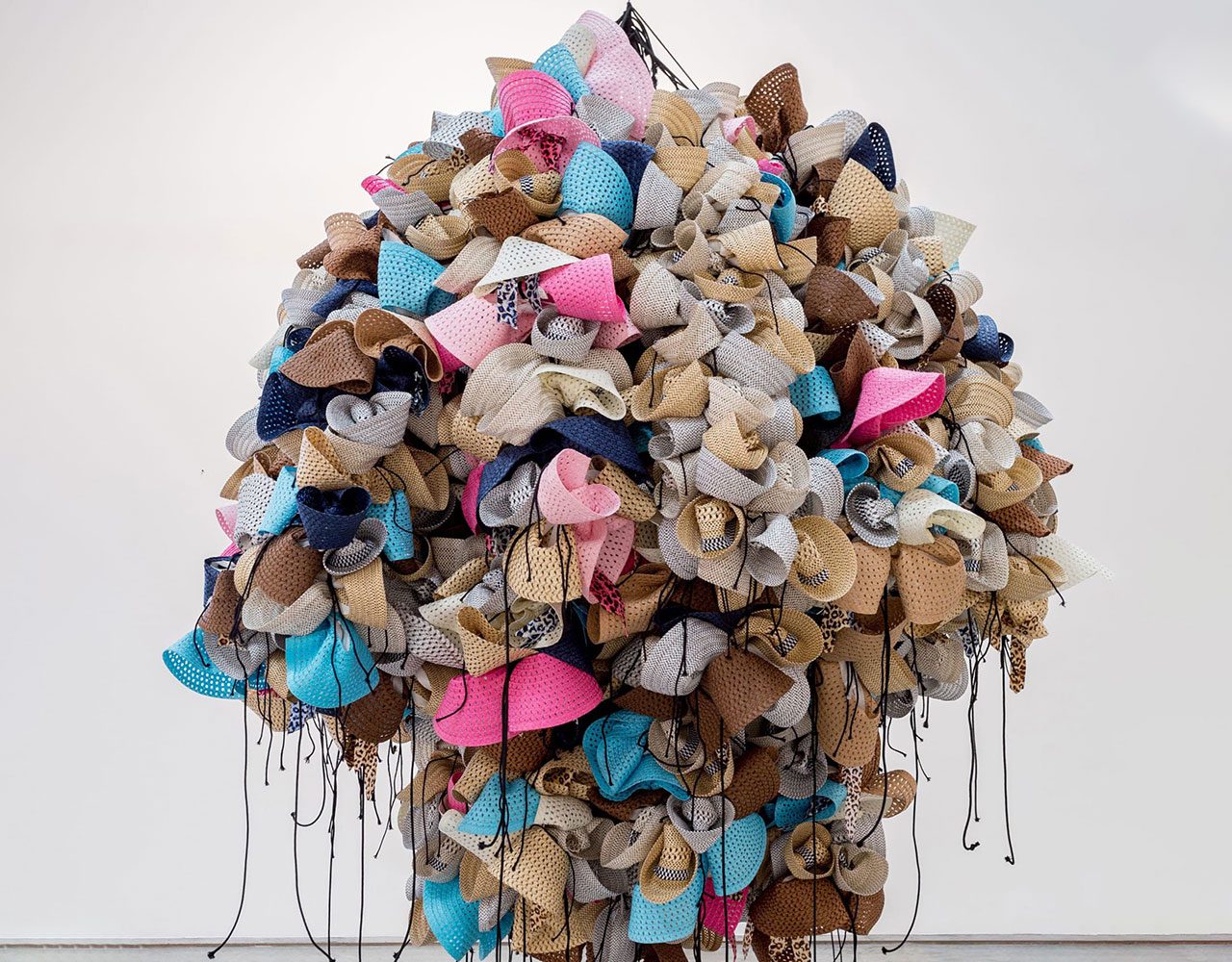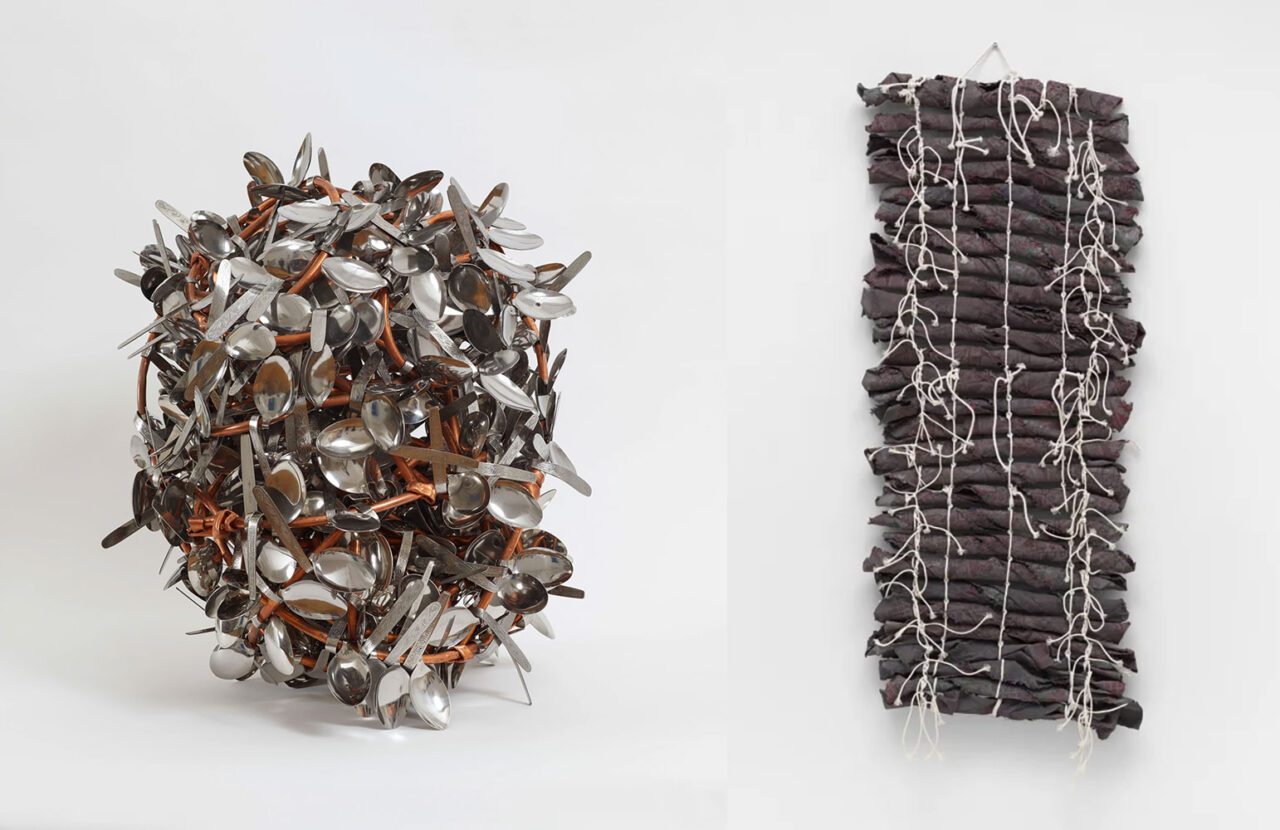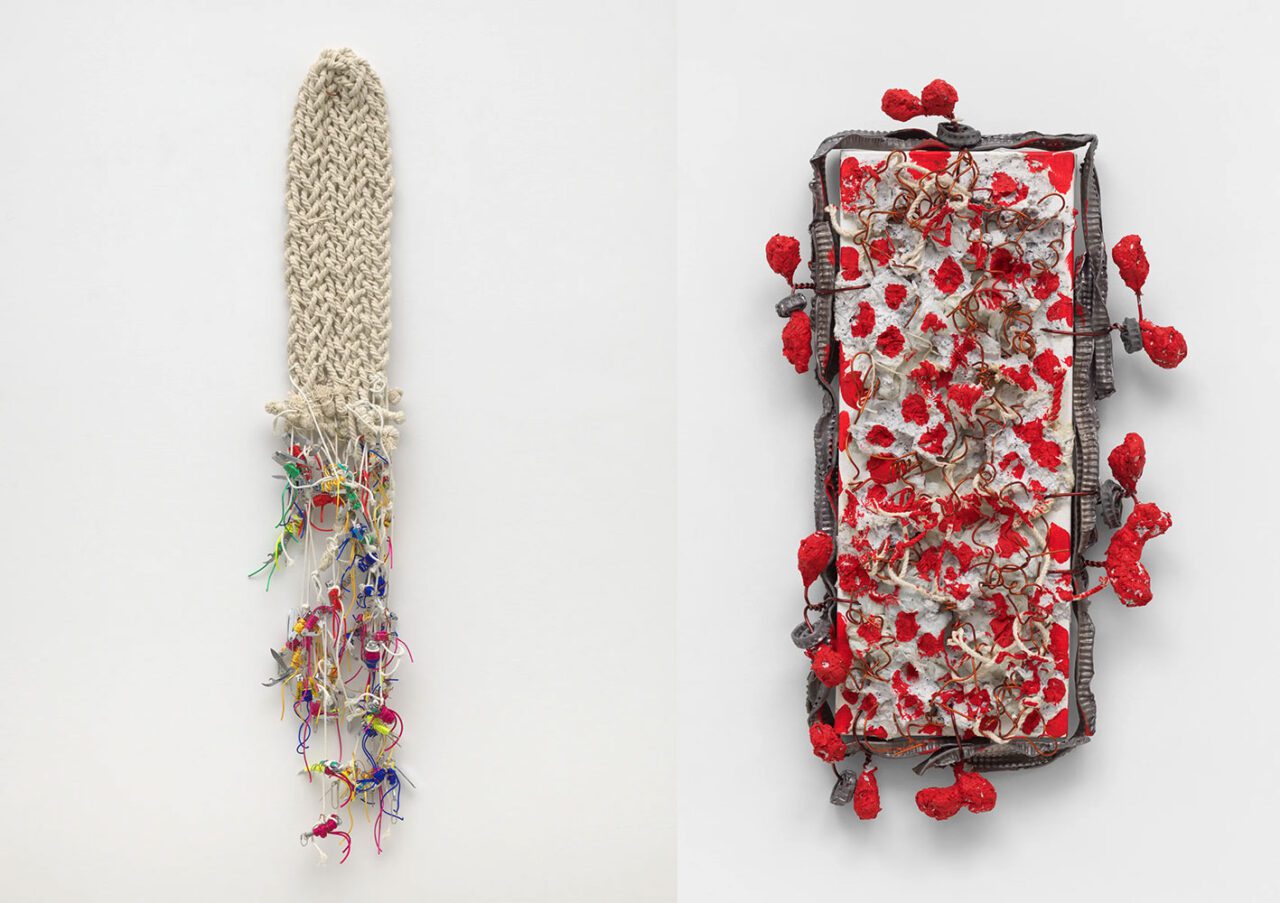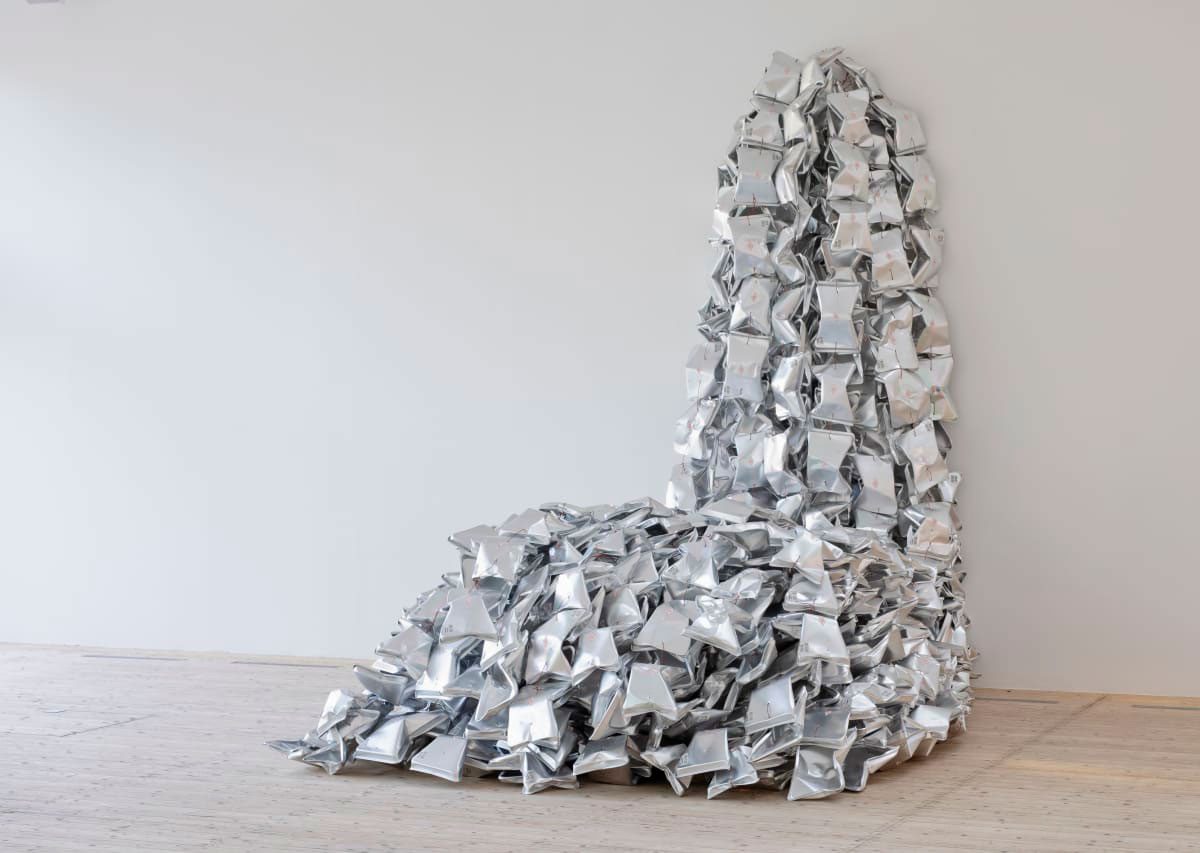PREVIEW: Hassan Sharif-Gathering
 Hassan Sharif was born in Bandar Lengeh, Iran and lived and worked in Dubai. Recognized as a pioneer of conceptual art and experimental practice in the Middle East, Sharif’s artworks surpass the limits of any single discipline, encompassing performance, installation, drawing, painting, and assemblage. Beginning in the late 1970s, he worked as a cultural producer and facilitator, moving between roles as artist, educator, critic, activist, and mentor to contemporary artists in the United Arab Emirates.
Hassan Sharif was born in Bandar Lengeh, Iran and lived and worked in Dubai. Recognized as a pioneer of conceptual art and experimental practice in the Middle East, Sharif’s artworks surpass the limits of any single discipline, encompassing performance, installation, drawing, painting, and assemblage. Beginning in the late 1970s, he worked as a cultural producer and facilitator, moving between roles as artist, educator, critic, activist, and mentor to contemporary artists in the United Arab Emirates.
By Efi Michalarou
Photo: Alexander Gray Associates Gallery Archive
“Gathering” is an exhibition featuring large-scale sculptures and works on paper by Hassan Sharif, a trailblazer of conceptual art in the Middle East. Sharif’s body of work surpassed any single medium, ranging from painting and drawing to performance, political caricatures, and assemblage. The works on view challenge established binaries of order and chaos, tradition and modernity. The monumental works in “Gathering” imbue everyday materials with a poetic sensibility. Created during Sharif’s final years, they are part of the Objects series he began in 1982. Sharif likened his hands-on assembly process to weaving, framing his intuitive methodology as a contemporary iteration of traditional handicraft. His use of industrial materials and consumer items responded to the rapid economic growth and demographic transformation of the UAE during his lifetime. However, his “Objects” neither explicitly critique nor celebrate these changes, which radically altered the built environment and social fabric of Sharjah and Dubai, where he lived and worked. The exhibition attests to the wide range of materials present in the “Objects” series. Some are composed of industrial implements, such as “Weave 4” (2013), where Sharif braids black rubber and white electrical wire into a frenetic tapestry. Others use utilitarian products, as in “555” (2016), an aggregation of one thousand aluminum food service pans that Sharif bends and binds together with copper wire to form a sprawling sculptural system. In works like “Hats” (2016) he foregrounds mass-market consumer goods—hundreds of circular-brimmed sun hats are tightly bound into a weighty spherical mass and suspended from the ceiling. In all these works, the utility of the object is rendered obsolete. As Sharif explained, “I take a product to my studio and the first thing I do is remove its use. So it cannot be used for the purpose it was created for. I cancel its usefulness. Then I add another material to it, so it becomes a work of art; an object.”
Born in the United Arab Emirates at the beginning of the 1950s, Hassan Sharif grew up in a time of great upheaval. After oil was discovered in the Gulf region in the early 1960s, the area changed overnight, and the economically weak desert region of the Emirates became a sovereign nation marked by its desire for progress. Sharif discovered his curiosity and affinity for art at a very early age and independently studied masters of Modernism such as Vincent van Gogh, Paul Cézanne, and Pablo Picasso, whose works he discovered through English books. Since he did not speak English, however, this first encounter with European art was informed purely by his observations on aesthetics, form, and style. During the social and economic upheaval in the Emirates, Sharif was working for the weekly magazine Akhbar Dubai, drawing caricatures and ironic cartoons relating to everyday life and politics. His provocative and satirical works quickly gained popularity and remain significant today as historical evidence of that period and culture. Through this practice, Sharif developed his critical voice in society at an early stage and was never too self-conscious to express his opinion on things, which he saw as his duty as an artist. While many of his contemporary colleagues were interested in a revision of traditional Arab art under the auspices of Modernism, Sharif continued with his autodidactic practice, learned English, and explored movements such as Dadaism and Surrealism, reproducing their painterly styles in his own manner in order to understand and internalize them. Sharif began his studies in London in 1979. While being abroad he moved within an intellectual circle that was to become inspirational for his views and practice. During this period, he also intensively studied Marcel Duchamp’s works, which had a lasting influence on his understanding of art. At the same time, Sharif adopted various postmodern artistic trends in London such as Abstract Expressionism, Minimalism, Performance Art, Pop Art, and Fluxus. Of main importance was a group of London artists who started a local movement with their examination of the modern manifestations of Constructivism and were known as the “Constructionists.” Sharif was primarily influenced by their way of systemic thinking, which he reflected, for example, in his grid drawings or his photographic works created between 1981 and 1985. Further, his work was also influenced by the Fluxus movement, which had a great impact on his performative practice at the time. One of his first early performances took place in the Hatta Desert near Dubai. The photographic documentation shows the artist carrying out ordinary sequences of movement such as walking, jumping, or digging, which, without context or any sense of purpose, lose their actual meaning. In their non-linearity, they subvert repetition, immateriality, and site-specificity as hitherto classic forms of work.
After completing his studies in 1984, Sharif consciously decided to return to the United Arab Emirates in order to support the local scene with his newly acquired knowledge. With the help of the government of Sharjah, he launched the Al Marijah studio, which became the center of intellectual life in the United Arab Emirates, and which he used to introduce a younger generation of artists to contemporary theory and praxis. At the same time, Sharif organized exhibitions at various venues such as the Al Markazi Market in Sharjah, where he presented works alongside other contemporary artists. His contribution resembled a readymade, consisting of two abstract geometric square paintings resembling a chessboard. One was placed on four water bottles, the other on the floor with the bottles placed in each of the four corners. Both works were reminiscent of elements of local architecture, as well as the low tables in the market where one drink tea or coffee while sitting on the floor or on cushions. One year later, Sharif used the Al Marijah studio itself as an exhibition venue—he painted the exterior walls of the building and the outbuildings between which he stretched a rope with stones. Both projects are examples of how Sharif would always regard his artistic production as situated in a social context as well as try to ground it in the public debate. In this respect, it was also important for the artist not to use valuable materials, but rather to show that objects found on the street were entirely sufficient to create works of art. This way of working attracted a great deal of attention and was subject of heated public discussions as the interventionist method of combining art with everyday objects was met with a great deal of incomprehension. Sharif viewed these reactions in a relaxed manner. His primary goal was to give the audience new food for thought. In line with this objective, the artist also experimented with site-specific works in the kitchen, bathroom, and corridors of the Al Marijah studio. One of his most important work cycles also began during this time; the works grouped under the name “Objects—Urban Archaeology” a. During his stays in Sharjah, Dubai, and the Hatta Desert which he made amid his university holidays, Sharif explored the particular aesthetics of his surroundings. His attention was drawn to the natural landscape on the one hand, and the aesthetics of the production of material goods on the other. His interest in the seemingly banal and mundane was sparked by his study of Duchamp, but also by his preoccupation with John Cage and his way of dealing with his immediate surroundings. “Art becomes important as a means to make one aware of one’s actual environment ”—this credo was essential to Sharif’s works, as his period abroad had given him a different perspective on his country of origin. Here, too, the Al Markazi market was both a stimulus and a source of inspiration. Characteristic of “Objects— Urban Archaeology” is the amassing of objects and various materials such as torn clothing, old news- papers rolled up and arranged vertically in a corner of a room, jute strips stuck together, or homemade papier-mâché pellets looking like lozenges. These material accumulations possessed a certain ambiguity: it seemed as if their formations had developed due to natural mutation while however their materiality showed clear evidence of industrial production. Sharif used this ambiguity to work with a variety of references. Using cardboard, rope, cotton, and wire, he created forms that resembled Arab pastries and sweets. At the same time, the material was reminiscent of those used in traditional carpet weaving. Over time, Sharif tended to work more with mass-produced goods and discarded products such as plastic cups, discount toys, metal cans, or cutlery, which he tirelessly altered by cutting, bending, and gluing subsequently putting them on a string. “Objects—Urban Archaeology” testifies not only to the rapid transition from manual to industrial production in the United Arabic Emirates, but also to the artist’s critical stance toward consumption. Another important aspect for Sharif was the inherent potential of materials to consolidate memories of actions. For Sharif, frequently used cardboard boxes were a form of historical evidence; the traces of human usage were clearly visible on the surface and—unlike their typical existence in the world—they were thus not merely anonymous objects.
Photo: Hassan Sharif, Hats, 2016, Ready-made hats and cotton rope, 290 x 210 x 200 cm – Courtesy Estate of Hassan Sharif and Alexander Gray Associates Gallery
Info: Alexander Gray Associates Gallery, 384 Broadway, New York NY, USA, Duration: 11/1-8/2/2025, Days & Hours: Tue-Sat 10:30-18:00, www.alexandergray.com/

Right: Hassan Sharif, Rug, Cotton Rope and Glue, 2013. Mixed media. 59 3/4 x 27 1/2 x 2 3/8 in (151.8 x 69.8 x 6 cm) – Courtesy Estate of Hassan Sharif and Alexander Gray Associates Gallery

Right: Hassan Sharif, Lead No. 2, 2014 (detail). Mixed media. 25 1/2 x 13 x 2 3/4 in (64.8 x 33 x 7 cm) – Courtesy Estate of Hassan Sharif and Alexander Gray Associates Gallery

